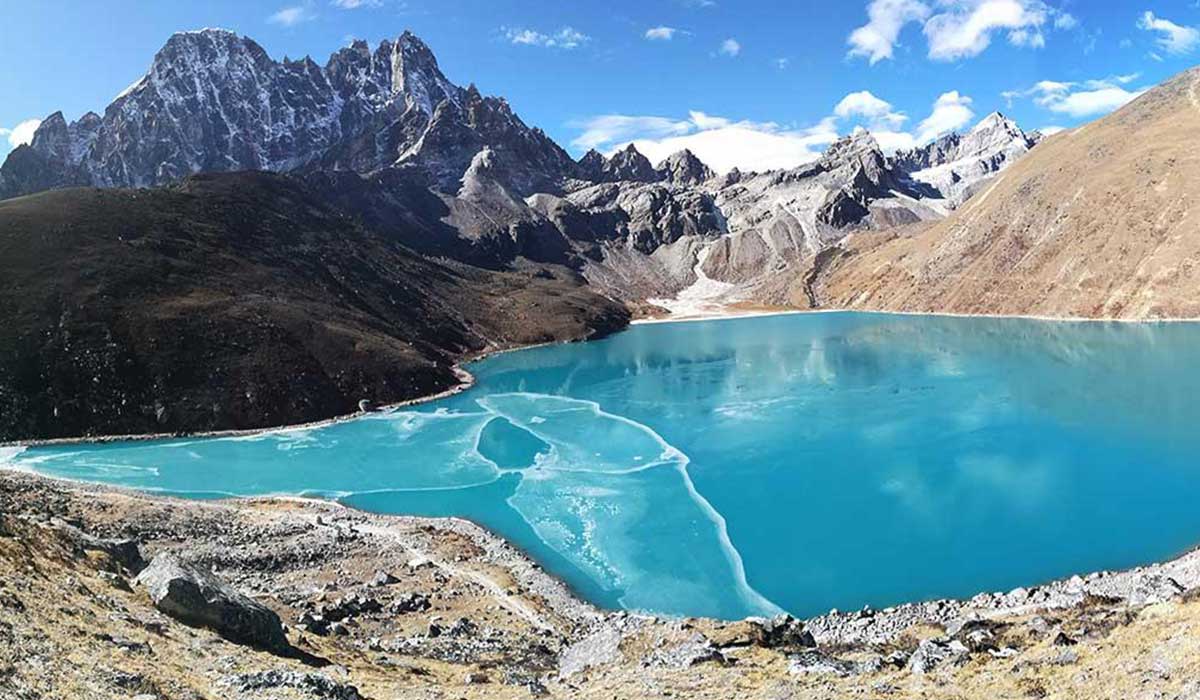The Gokyo Trek in Nepal is a challenging but rewarding adventure, filled with stunning views of lakes, glaciers, and towering peaks. As beautiful as the trek is, one thing that often gets overlooked is food. The meals you eat on this trek are more than just fuel for your body — they become moments of comfort and connection, especially when the altitude starts to take its toll.
Breakfast: The Start of Your Day
Breakfast is incredibly important on the Gokyo Trek. You’ll need energy for the long walks ahead, and the lodges offer hearty options. One of the most common meals is porridge, served warm and filling. I remember mornings when I didn’t feel like eating much because of the altitude, but the creamy porridge, sometimes with honey or fruit, gave me just the boost I needed.
Another popular choice is Tibetan bread — a kind of flatbread, fried and crispy. Eating it with butter or jam felt like a small luxury in the mountains. Eggs are also readily available, often cooked as an omelette or scrambled, giving you a much-needed protein kick to start the day.
Lunch: Refueling Along the Way
Lunch on the trek is usually eaten in small tea houses along the trail. One of the most common dishes is dal bhat, a traditional Nepali meal consisting of rice, lentil soup, and vegetables. The best part? It’s usually served with free refills! I quickly realized why trekkers swear by dal bhat — it’s nutritious, hearty, and perfect for keeping you going for hours.
Another great option is noodle soup, often called "Thukpa." Warm, hearty, and filling, it’s perfect for those cold, windy afternoons when you’re craving something to warm your insides. I still remember the comforting taste of hot noodle soup in a quiet tea house, watching the snow-capped mountains in the distance.
Dinner: Warming Up After a Long Day
Dinner on the trek is usually a cozy affair, enjoyed by the fire in the common room of your lodge. One of the dishes I loved most was Sherpa stew (called "Shyakpa"). This thick, vegetable-based soup with meat or noodles is both filling and soothing after a long day of walking. The warmth of the stew, combined with the warmth of the people I shared it with, made me feel at home, even in the middle of the mountains.
Pasta, rice, and potato-based meals are also widely available and can be comforting choices when you’re looking for something familiar. In many places, I found fried potatoes with vegetables or spaghetti were easy on my stomach, especially at higher altitudes where you sometimes don’t feel like eating too much.
Snacks: Keeping Your Energy Up
Bringing your own snacks can make a huge difference on the Gokyo Trek. While meals at the lodges are hearty, the walks can be long, and it’s nice to have something to nibble on between stops. I packed energy bars, nuts, and chocolate, which gave me little bursts of energy throughout the day. On the tougher days, especially as the altitude increased, these snacks became my lifeline, offering quick calories when I didn’t have the appetite for a full meal.
The Importance of Hydration
While food is important, staying hydrated is even more critical. At high altitudes, you lose more water than you might think, and drinking enough can help prevent altitude sickness. Hot tea is a staple on the trek, with many types available like ginger tea, mint tea, and my personal favorite, masala chai. Sipping on a hot cup of tea while resting was one of the highlights of my trek — the warmth, the taste, and the view all came together in those small moments.
Final Thoughts: Food is More Than Just Fuel
Eating on the Gokyo Trek is about more than just keeping your body going. Each meal is an opportunity to rest, to connect with fellow trekkers, and to appreciate the simplicity of life in the mountains. In those quiet moments, over a bowl of hot soup or a plate of dal bhat, you begin to understand the importance of nourishment — not just for your body, but for your soul as well.
So, as you prepare for your trek, take some time to think about the meals you’ll eat along the way. They’ll become an essential part of your journey, giving you strength when you feel weak, warmth when you’re cold, and a sense of connection when the trail feels long.





Comments